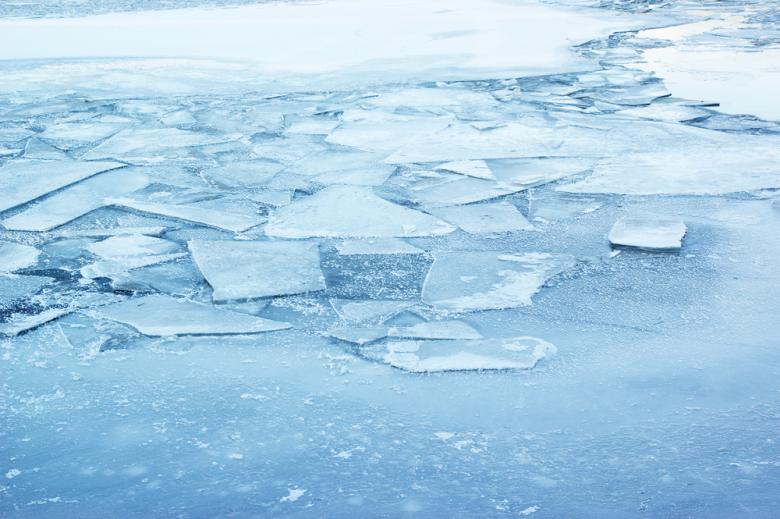How to Escape if You Fall Through Broken Ice
There are different schools of thought with respect to how to get out of the water as quickly as possible after falling through ice. Depending on the temperature of the water, prevailing weather conditions and what you are wearing, you may have less time to react than you may think. Unfortunately, there are no right or wrong answers, and the method you choose will be specific to the situation. Let’s take a look at a few suggestions that can give you a deeper pool of options to consider if you ever find yourself in this type of emergency.
Don’t Panic
One thing that all experts agree on is that the first thing to do is to remain calm. Panicking not only clouds judgment, but it also has serious physiological impacts on the body during to exposure to cold water. The first thing that our body will do is lock up and channel as much blood to the torso as possible. This also causes us to start hyperventilating and increases our heart rate. This robs us of our energy, and causes heat to escape our bodies every time we exhale. It also causes our extremities to shut down prematurely which can impact our ability to escape long before hypothermia sets in.
It’s important to work through this “shock effect”, focus on controlling your breathing and focus on getting out instead of how cold you feel at the moment. It really is all about mind over matter in this situation, and it is the most important step towards getting out alive. Always remember that panic is the leading cause of either freezing to death or drowning.
What About Clothing?
It is common to hear that shedding clothing in a water emergency will reduce dead weight and make it easier to float or tread water. However, it may be better to keep the warm clothing on in a cold water emergency. You can position your body so that the clothing will trap air and assist in flotation. This can help to keep your core warm as you calculate your next steps.
However, you also need to use your good judgment in terms of what items to keep on and what ones to get rid of. You may need to shed your backpack, some gear, your outer jacket or boots if they are holding you down. The important thing to remember is that you will need warm weather clothing once you escape, and you want to find a balance between getting rid of in order to maneuver yourself out of the water and what you will need to wear later. Think this through, and shed things in stages whenever possible.
Getting Out
The next step is to orient yourself and try to assess where you fell through and what direction you were facing when the ice broke. You want to try and maneuver yourself so that you go back to the spot where you entered the water. Chances are that the ice at the edge of the break will be strong enough to support your weight. You will also end up getting out of the water in the same place you fell in, which means that you can backtrack to safety.
Next, take a deep breath and lunge toward the edge with your arms extended so that you can give yourself some leverage as you try to pull yourself out. Inhaling will make you more buoyant and can help you to lift your upper body out of the water and hopefully slide on top of the edge, just like a seal or walrus. Kick feverishly, use your arms to pull yourself further from the edge and start wiggling your torso to help you squirm up as well.
A different variation involves getting your hands and arms up to the shoulders on the ice and digging in with your fingers. At the same time, position your body so that you are parallel to the edge instead of pointing outward. Scissor kick your legs and feet repeatedly to give you some buoyancy as you try to lift and roll yourself up on the ice. This approach is thought to distribute your weight more evenly while putting more of your surface area in close proximity to the ice. The idea is that you can use more of your lower body to help get you out of the water instead of relying on your arms and torso.
Dry out and Warm Up
In both cases, once you’re out of the water, roll a few times to get some snow on your clothing and put some distance between you and the edge. The snow will help to insulate you and soak up some of the water on your clothing. Get to shelter as quickly as possible and remove your clothing. Wrap yourself in dry material and get near a heat source. Once you’ve warmed up and calmed down, you can turn your attention to drying out your clothing.
Consider taking an ice pick, screwdriver or corkscrew with you whenever you venture out onto the ice. Having something to dig into the ice with can make all of the difference in the world in terms of giving you leverage to pull yourself out. Another thing to consider is practicing if it is safe and practical to do so. As uncomfortable as the idea sounds, some practice could put you at a distinct advantage if you ever fall through the ice in a real-world situation.
These are just two of many techniques that can be used to escape after falling through ice. Take some time to learn more about what you can do to protect yourself as well as how to get out of danger as quickly as possible. Remember that there are no right answers, and the more options that you have at your disposal, along with experience, can significantly increase your chances of getting out unscathed.

